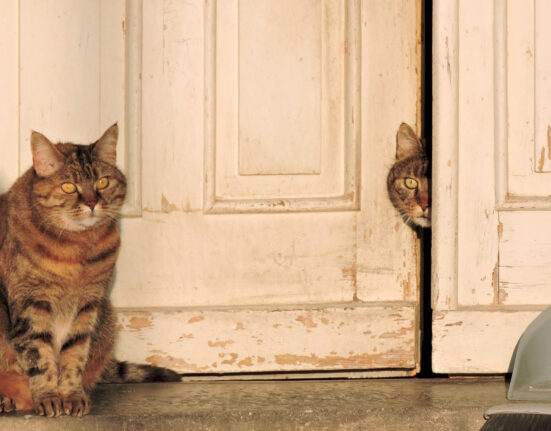Almost twenty-five years ago I found myself in the emergency room at Södersjukhuset with a suspected ectopic pregnancy. It was my third ectopic and fifth miscarriage, and so you could say I was battle hardened. I had brought an exciting novel for the inevitable wait and settled down. I was feeling calm and knew what lay ahead. After ninety minutes a stressed, lightly panicked young doctor blew into my waiting suite and without saying hello snapped; “I’m sorry you had to wait but there are actually women having babies out there that I have to take care of.” This not being my first rodeo, I was able to calmly say; “that must be so much more fulfilling than dealing with pregnancy fuckups like me.”
Needless to say it stopped her in her tracks, brought her back into the present moment, and helped her to see that all the stress was hers, not mine. I was neither upset at her for waiting, nor hysterical about having an ectopic. We weren’t immediate best friends, but I hope that night she learned a lesson about taking a moment to get on the right wavelength with a patient. Or attuning, as we call it in psychology.
When a client walks into the room or comes into the Zoom space, we take a moment to feel into the mood of our client. It is part of the process of creating a safe space, consciously aligning our emotional field with theirs. Not just therapists, anyone working with people needs to practise this attunement, whether it be to the team that they are leading, the group they are facilitating, or in individual conversations. It doesn’t mean our own mood is not important, it’s just not the responsibility of the people that we’re caring for. This capacity creates a feeling of being seen and accepted. After all, it’s an age-old process by which we once, as tiny babies, were made to feel safe in the arms of our caregivers, or not.
The game of mirroring
Our early caregivers teach us how to be and how to do by showing us. Holding a fork like this, putting your shoes on like that. A smile elicits a smile and sadness tight hug. From the moment we are born we absorb all these examples. Unless we are born neurodiverse and with some aspects of autism, in which case the path is different.
In the first three years of our lives, this exchange of information is pre-verbal and unconscious. Attunement is the way we learn how to be in order to be accepted into the tribe, get food and shelter, and thus, at a very basic level, survive. And though a baby won’t think of it in this way, her survival self tells her; “if I don’t keep in with this crowd, I will be outcast and then I will die.” Many early attunement experiences, good or bad, are stored in our bodies and expressed through our survival mechanism. When you stop following such a deep-seated internal script, and try to learn new patterns of behaviour, it can feel like a life-or-death battle to your most vulnerable self.
Infants are like sponges. The little baby gazing into the eyes of his primary caregiver, unconsciously exchanges ‘mood information’. And in that exchange, it’s the mood of the infant that counts. However stressed or tired, angry or fed up the caregiver, they need to correctly attune to the mood of the infant. A baby can’t ‘explain’ to itself why its caregiver is feeling overwrought and so mother’s anger becomes the babies internalised anger. Father’s depression becomes the infant’s internalised melancholy, leaving no room for its own expression of joy and excitement. Attuning to a depressed or angry caregiver, the infant experiences ‘this feels bad, I am bad.” Or with a dramatic caregiver, “I am a drama, I am too much.”
But let’s be honest, there is no such thing as a full time perpetually optimistic, loving, chilled parent. No caregiver gets it right all the time. This is not about superhuman denial of your feelings, nor about telling your child you are not sad while the tears are dropping on his forehead. It is about a general trend over time.
You are accepted in all aspects of self
A healthy attachment tells the infant that it is accepted, most of time, in all aspects of itself; happy, angry, curious, exploring, expressing needs, and individuating. But there has to be ‘mood room’ between the caregiver and the infant, for the infant to express itself in this way. It’s like a tiny whisper, compared to the adult’s mood which can be like a storm. The caregivers attune to these developmental moods, name them, and make them safe. Especially the scary ones like frustration, anger, and pain. A parent who can still himself help the baby calm down, teaches soothing techniques that can be internalised. The parent that uses assertion in a positive and boundaried way teaches her child how to stand up for itself.
The second part of a healthy attachment is the growing confidence that, most of the time, this person will be there for me when I need them. And over time this develops into ‘I can be there for me when I need me’. And gradually, that experience becomes internalised and becomes the bridge across which we bravely set out into the world on our own.
Finding the roots of our attachment trauma
When I explore their early ‘holding’ experiences with clients, it is not to lay blame. It is, however, useful to understand deep underlying and unconscious ‘scripts’ that still influence us on an everyday level. And theories about bonding and attachment are very much in vogue right now, which is a good thing, because the way we are able to attach to our initial caregivers will determine the ‘script’ for our relationships going forward.
However, the outdated version of attachment theory is rather black and white. You are either securely attached or insecurely attached, the latter then divided up into fearful, needy, and disorganised. Lately, especially thanks to a revision of attachment theory by Jessica Fern, this model should be seen more like a spectrum with various caregivers plotted along the line. My maternal attachment and attunement experience is different from the one I experienced with my father, or my brother for that matter, who was often put in the role of being the parent.
So healthy attachment allows you to hold your own mood in one place, as they feel into the wavelength of the other. Not sliding into the despair of the other, nor imposing their own mood on them; “I am in this place with my emotions, and you are in that place with yours. I don’t have to please you, absorb you or punish you. I empathise with you while at the same time, I do me, while you do you.”
And so to summarise, this process of attunement, feeling into the wavelength, from the mirroring neurons to the empathy that oils its wheels, is innate and pure. But it is the faulty processing of that information that creates psychological wounds, causing ingrained relating styles based on unconscious life-scripts. And with a new healthier experience of attunement, this process can be unravelled and reprogrammed.
This creates the freedom to consciously attune yourself, not only to your outer, but also to your inner world. Empathically orchestrating all your self-parts from a centred place in yourself. Conscious and empathic inner attunement is therefore a great tool in healing from painful life scripts and mood-kidnaps, helping you build equality, safe boundaries, and interdependency in your relationships.
Listen to this article:
Lysanne Sizoo, international Mental Health specialist
With over two decades of experience, Lysanne Sizoo specializes in assisting expatriates, international professionals, and global nomads facing mental health challenges. Her professional journey has taken her to the United Kingdom, Sweden, New Zealand, and the Netherlands. While her practice is set to relocate to Stockholm by the end of 2024, she continues to serve a diverse clientele through online consultations.
Living away from one’s native country comes with its unique set of psychological hurdles, alongside the everyday ups and downs of life. This holds true for global nomads, cross-cultural adults, and children alike.
In the upcoming months, Lysanne will share her insights through blog articles and by addressing readers’ concerns. She will also chronicle her personal journey as she returns to Sweden after a decade in her home country.
If you have specific topics or issues that you’d like Lysanne to explore in her articles, please reach out via the contact form on this website or directly through her personal website. Rest assured, your privacy and confidentiality will be upheld.













